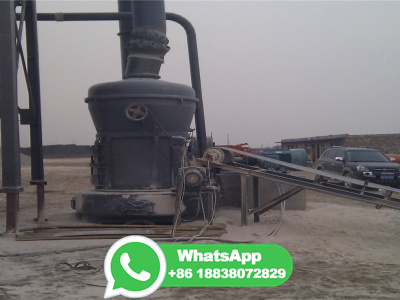
Coal is formed when dead plant matter submerged in swamp environments is subjected to the geological forces of heat and pressure over hundreds of millions of years. Over time, the plant matter transforms from moist, lowcarbon peat, to coal, an energy and carbondense black or brownishblack sedimentary rock.
WhatsApp: +86 18203695377
The process that microbes use to create a methane precursor molecule from coal. Anaerobic microbes live in the pore spaces between coal. They produce enzymes that they excrete into the pore...
WhatsApp: +86 18203695377
The formation of clastic and organic rocks begins with the weathering, or breaking down, of the exposed rock into small fragments. Through the process of erosion, these fragments are removed from their source and transported by wind, water, ice, or biological activity to a ... Sedimentary rocks like bituminous coal, limestone, and sandstone, ...
WhatsApp: +86 18203695377
Vocabulary Coal is a black or brownishblack sedimentary rock that can be burned for fuel and used to generate electricity. It is composed mostly of carbon and hydrocarbons, which contain energy that can be released through combustion (burning).
WhatsApp: +86 18203695377
Also known as "soft coal", bituminous coal is the type found in Cape Breton and is our most abundant fuel. It is greatly used in industry as a source of heat energy. Anthracite, the fourth stage in coal formation, is also known as "hard coal" because it is hard and has a high lustre. It appears to have been formed as a result of ...
WhatsApp: +86 18203695377
This paper presents the experimental results of oxygen/steam gasification of lignite coal char in a fixed bed reactor under atmospheric pressure and at the temperature of 700, 800 and 900 °C; the samples come from an open pit lignite mine in the southwest of Poland. ... Gasification is a thermochemical process in which the fuel, coal in this ...
WhatsApp: +86 18203695377
How is coal formed? BBC Science Focus Magazine It takes millions of years to create and as a nonrenewable resource, there is only a finite amount.
WhatsApp: +86 18203695377
Ammoniacoal cocombustion is a feasible approach to reduce CO 2 emissions during thermal power generation, it is necessary to study NO formation mechanism in ammoniacoal cofiring to realize lowcarbon and lownitrogen combustion. The experimental results showed that temperature and ammonia ratio have a significant effect on the NO formation.
WhatsApp: +86 18203695377
Chemistry Coal and Petroleum Formation Of Fossil Fuels Formation of Coal How is Coal Formed? Coal is fossil fuel or fuel that comes from the remains of prehistoric plants or animals. The formation of coal occurs over millions of years via a process known as carbonation.
WhatsApp: +86 18203695377
Coal is a combustible black or brownishblack sedimentary rock with a high amount of carbon and hydrocarbons. Coal is classified as a nonrenewable energy source because it takes millions of years to form. Coal contains the energy stored by plants that lived hundreds of millions of years ago in swampy forests. Layers of dirt and rock covered the ...
WhatsApp: +86 18203695377
Coalification is a geological process of formation of materials with increasing content of the element carbon from organic materials that occurs in a first, biological stage into peats, followed by a gradual transformation into coal by action of moderate temperature (about 500 K) and high pressure in a geochemical stage. Notes:
WhatsApp: +86 18203695377
The investigated samples originated from the Taiyuan formation and Shanxi Formation, both of which are coal bearing strata with an average thickness of 150 m (Lv et al., 2012). The Taiyuan Formation is deposited in a transgressive compound sedimentary system, which includes the barrier island in the epicontinental sea and carbonate platform.
WhatsApp: +86 18203695377
Humification is a process of formation of humic substances (organic matter that has reached maturity) decomposed from plant remains. Humification results from progressive oxidation by addition of oxygen from oxygenated water and lowering of the groundwater table, pH values of the water in the peat, and heat exposure or peat temperature.
WhatsApp: +86 18203695377
Coal, one of the world's most impactful fossil fuels, was formed millions of years ago, in very specific conditions. Most of the coal on Earth formed approximately 300 million years ago from the ...
WhatsApp: +86 18203695377
The formation of peat is the first step in the formation of coal. With increasing depth of burial and increasing temperature, peat deposits are gradually changed to lignite. With increased time and higher temperatures, these lowrank coals are gradually converted to subbituminous and bituminous coal and under certain conditions to anthracite.
WhatsApp: +86 18203695377
Abstract. This chapter describes the process of coalification, which gradually turns plant debris into coal, involving heat, pressure and the effects of time. Chemical changes during peatification and coalification are described, and also structural changes in coal during coalification are covered (cleats and their development).
WhatsApp: +86 18203695377
Anthracite coal formation: The final stage in coal formation occurs when bituminous coal is subjected to more significant pressure and temperature levels. This extreme environment causes the coal to have an even higher carbon content and lower levels of impurities.
WhatsApp: +86 18203695377
Coal is the result of an accumulation of organic and inorganic material and its followup transformation over geological times by the process of coalification into a fossil fuel with relatively high energy density [ 2, 3] (the coalificiation process is explained in detail further down).
WhatsApp: +86 18203695377
The distributions of the three main elements, namely C, H, and O, in gaseous pyrolysis products generated from four types of coal at different temperatures were compared with the results for ultimate analysis of raw coal. The results are shown in Figs. and The order of the oxygen contents of the four types of coal is Dongshan coal (3. ...
WhatsApp: +86 18203695377
Cocombustion of coal and biomass is one of the most prospective methods to use for renewable energy sources during the transition from nonrenewable fossil fuels. As coal is a vital energy source, it will be used for a long time . In China, coal accounts for around 70% of the primary energy supply, which is much higher than the global average .
WhatsApp: +86 18203695377
How is coal formed? Ans: Over hundreds of millions of years, dead plant matter immersed in wetland conditions is subjected to heat and pressure of geological forces, resulting in the coal formation. Coal is an energy source, and carbon compounds of dense black or brownishblack sedimentary rock form over time from damp, lowcarbon peat.
WhatsApp: +86 18203695377
Fossil fuel formation refers to the process that takes place over the time span of hundreds of millions of years to produce a variety of fossil fuels including coal, oil, and natural all of the produced materials begin as organic material and are transformed over a large time span due to burial by sediment, pressure, and temperature, different conditions result in the formation of ...
WhatsApp: +86 18203695377
Taiyuan Formation contains 1014 coal seams with a cumulative thickness ranging from to m ( m averages) (Fig. 4), of which coal seam 15 in the lower part of the Taiyuan Formation ...
WhatsApp: +86 18203695377